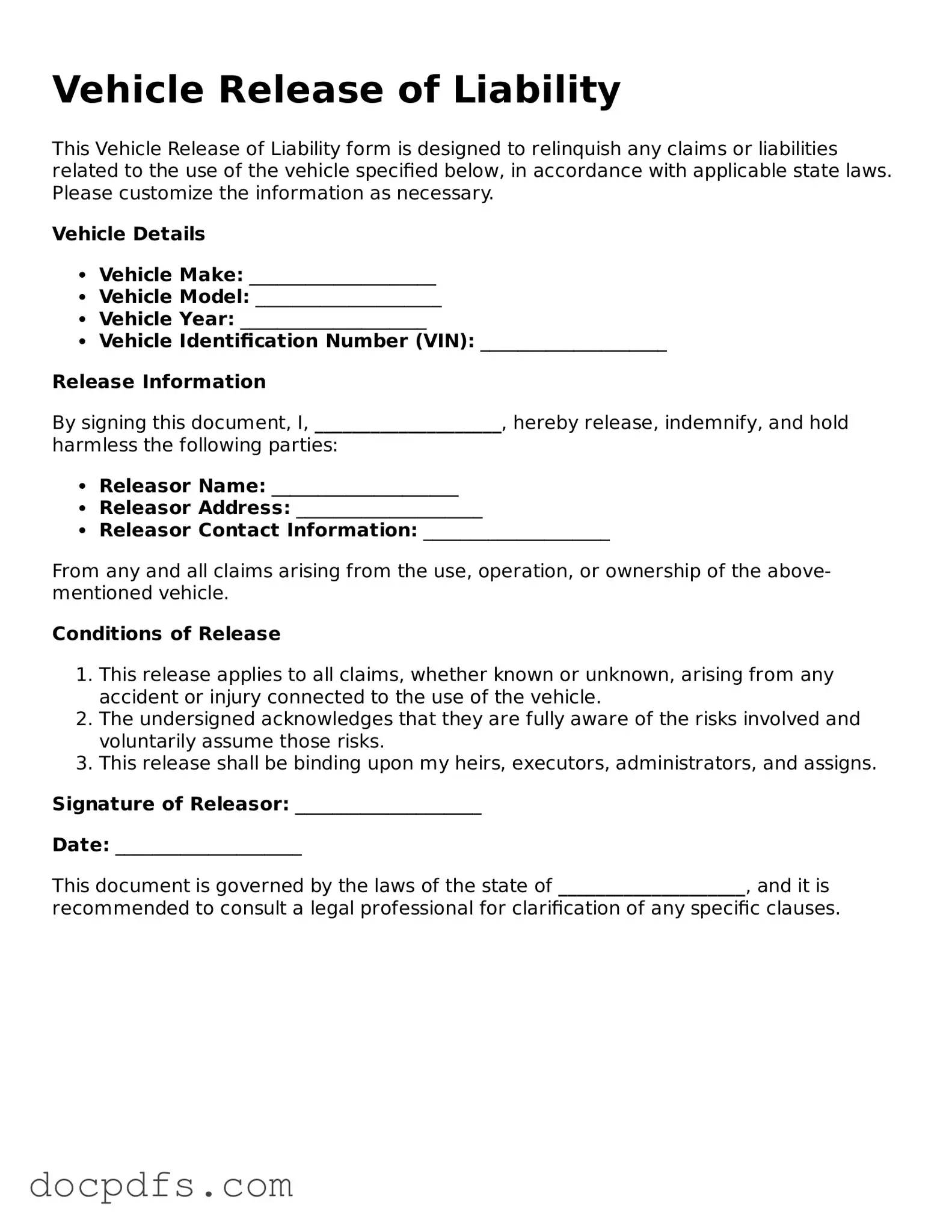A Vehicle Release of Liability form is a document that protects the seller of a vehicle from any future claims or legal issues that may arise after the sale. By signing this form, the buyer acknowledges that they take full responsibility for the vehicle once the transaction is completed. This helps to ensure that the seller is not held liable for accidents or damages that occur after the sale.
Using this form is crucial for both parties involved in a vehicle transaction. It provides a clear record of the sale and protects the seller from potential legal claims. Additionally, it can help prevent misunderstandings regarding ownership and responsibilities. Without this form, the seller may be held accountable for issues that arise after the vehicle has been sold.
Both the seller and the buyer should sign the Vehicle Release of Liability form. The seller is acknowledging that they are transferring ownership, while the buyer is accepting responsibility for the vehicle. Having both signatures ensures that both parties are in agreement and aware of their respective responsibilities.
Filling out the form is straightforward. Here are the steps to follow:
-
Provide the date of the transaction.
-
Include the names and contact information of both the seller and the buyer.
-
Describe the vehicle, including the make, model, year, and VIN (Vehicle Identification Number).
-
Clearly state that the seller is releasing any liability associated with the vehicle.
-
Both parties should sign and date the form.
Yes, the form is legally binding as long as it is filled out correctly and signed by both parties. It serves as a written record of the transaction and the agreement made between the seller and the buyer. However, it is always advisable to check local laws, as requirements may vary by state.
You can find a Vehicle Release of Liability form through various sources. Many state Department of Motor Vehicles (DMV) websites offer downloadable forms. Additionally, legal websites and document preparation services provide templates that can be customized to fit your needs. Ensure that the form you choose complies with your state’s regulations.
After both parties have signed the Vehicle Release of Liability form, it is important to keep a copy for your records. The seller should also notify their local DMV about the sale. This step is crucial to officially transfer ownership and update vehicle registration records. The buyer should ensure that they register the vehicle in their name promptly to avoid any potential issues.
